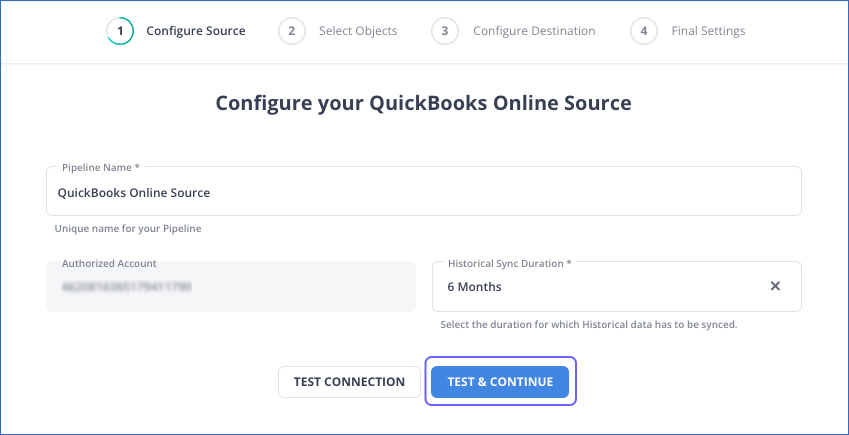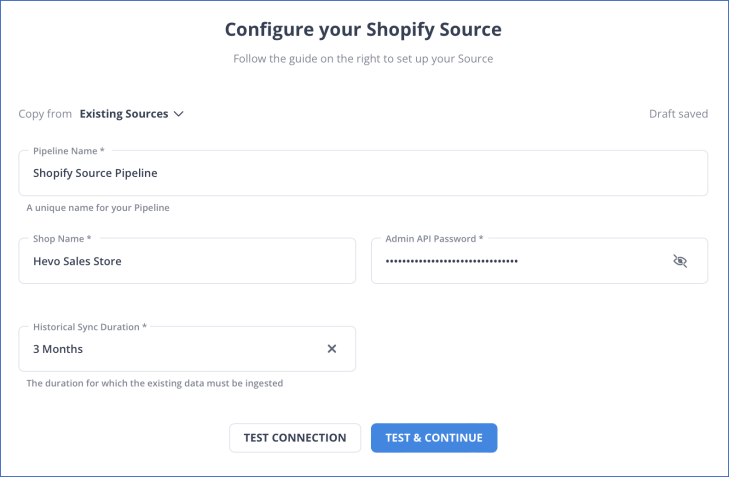QuickBooks and Shopify are two powerhouse sites that provide services fulfilling two distinctly different yet important business needs. One platform is a trusted accounting solution that simplifies financial management, while the other is a leading e-commerce building and managing all aspects of an online store.
Whether you want to simplify your accounting processes or have a robust online shopping experience, Quickbooks Shopify are necessary tools to maximize your operations. In this blog, explore QuickBooks and Shopify in-depth, covering their features, use cases, alternatives, and how Hevo supports them as data sources for your analytics and reporting needs.
Table of Contents
What is Quickbooks?
QuickBooks is accounting software that is used by businesses around the world to manage funds, invoices, payroll, and other taxes. It is a time saver and reduces manual errors in a business’s accounting process. Professionals can also enhance their expertise and credibility by becoming a QuickBooks Certified ProAdvisor, offering specialized guidance to clients.
Key Features of Quickbooks
Some of the key features of QuickBooks are:
- Invoicing: Create, send, and track invoices easily and automatically.
- Expense Tracking: Automatically categorize and control expenses.
- Inventory Management: Track stock levels and receive notices when the inventory is below a certain level.
- Payroll Integration: Simplifies employee payments and tax calculations for you.
- Detailed Reports: Get insights with customizable financial reports.
Use Cases of QuickBooks
- Generate profit and loss statements for better decision-making.
- Automate tax calculations and filings.
- Manage finances for multi-channel sales operations.
Alternatives to QuickBooks
| Tool | Best For | Key Features | Pricing |
| Xero | International businesses | Multi-currency support, tax compliance tools | Starts at $15/month |
| Zoho Books | Small businesses with tight budgets | Automated workflows, integration with Zoho Suite | Starts at $15/month |
| FreshBooks | Freelancers and project-based accounting | Time tracking, project-based invoicing | Starts at $19/month |
Exporting your data from QuickBooks doesn’t have to be complex. Relax and go for a seamless migration using Hevo’s no-code platform. With Hevo, you can:
- Effortlessly extract data from 150+ connectors.
- Tailor your data needs with features like drag-and-drop and custom Python scripts.
- Achieve lightning-fast data loading into your desired destination, making your data analysis ready.
Try to see why customers like Eagle Point and Harmoney have upgraded to a powerful data and analytics stack by incorporating Hevo!
Get Started with Hevo for FreeWhat is Shopify?
Shopify is one of the leading e-commerce platforms that allow businesses to create and manage online stores. With features for storefront design, payment processing, and inventory management, Shopify is the backbone of countless online stores around the world.
Key Features of Shopify
- Customizable Storefronts: Easy-to-use themes and dashboards to design your store.
- Payment Processing: Supports multiple payment gateways.
- Order Management: Track and fulfill orders seamlessly.
- Marketing Tools: Built-in SEO, social media integrations, and email marketing.
- App Integrations: Connecting third-party apps for added functionality.
Use Cases of Shopify
- Create a new Shopify store with no technical background.
- E-commerce business operations with global shipping capabilities.
- Use Shopify’s built-in promo features to create promotions.
Alternatives to Shopify
| Tool | Best For | Key Features | Pricing |
| WooCommerce | Customizable e-commerce stores | Open-source, extensive plugins for scalability | Starts at $2.95/month |
| BigCommerce | Large-scale businesses | Built-in SEO, multi-channel selling | Starts at $29/month |
| Squarespace | Creative professionals | Elegant themes, built-in marketing, and analytics | Starts at $16/month |
Leveraging Hevo’s No-Code Platform
Hevo, a cloud-based ETL solution, enables frictionless data integration between your platforms, such as QuickBooks and Shopify, so business data just flows through without manual interventions.
QuickBooks as a Source
Hevo lets you integrate QuickBooks into your data warehouses or analytics platforms. This lets you:
- Extract financial information in real time.
- Monitor the trends and patterns with the help of centralized dashboards.
- Sync QuickBooks data into other tools such as Power BI, Tableau for holistic reporting.
Here’s how Hevo makes the data replication from Quickbooks to a destination of your choice ridiculously easy:
Configure Quickbooks as your Source
- Fill in the required attributes required for configuring Quickbooks as your source.

Shopify as a Source
Hevo enables Shopify data to be synced with your data warehouse, helping you:
- Track sales performance across all channels.
- Analyze customer behavior for personalized marketing strategies.
- Generate detailed reports for better decision-making.
Here’s how data can be loaded from Shopify to a destination of your choice without having to write any code with Hevo seamlessly:
Configure Shopify as your Data Source
- Connect and configure your Shopify data source by providing the Pipeline Name, Shop Name, and Admin API Password.

Check out some other cool features of Hevo:
- A user-friendly interface.
- Robust data integration and seamless automation.
- It supports 150+ connectors, providing all popular sources and destinations for your data migrations.
- The drag-and-drop feature and custom Python code transformation allow users to make their data more usable for analysis.
- A transparent, tier-based pricing structure.
- Excellent 24/5 customer support.
Conclusion
QuickBooks and Shopify are both important tools for businesses aiming to make accounting easier and enhance e-commerce operations. QuickBooks handles the financial aspect of business very smoothly, whereas Shopify enables a business to design seamless online shopping experiences.
Exploring features, use cases, and alternatives can help you select the best one according to your requirements. For businesses aiming to unlock deeper insights and enhance their data-driven decision-making, Hevo offers a no-code platform to seamlessly integrate and centralize data from these platforms into your preferred data warehouse.
Reach the next level with your business by signing up for a 14-day free trial with Hevo today!
FAQs
1. Is QuickBooks good for eCommerce?
Yes, QuickBooks is ideal for eCommerce businesses as it simplifies accounting, tracks inventory, and automates sales and expense reporting. It integrates with many eCommerce platforms, helping businesses manage finances efficiently.
2. How do I set up QuickBooks for eCommerce?
Set up QuickBooks for eCommerce by creating a QuickBooks account, linking your bank accounts, and integrating with your eCommerce platform using native or third-party tools.
3. How to enter Shopify sales into QuickBooks?
You can manually enter Shopify sales into QuickBooks by recording sales receipts and categorizing transactions.


















